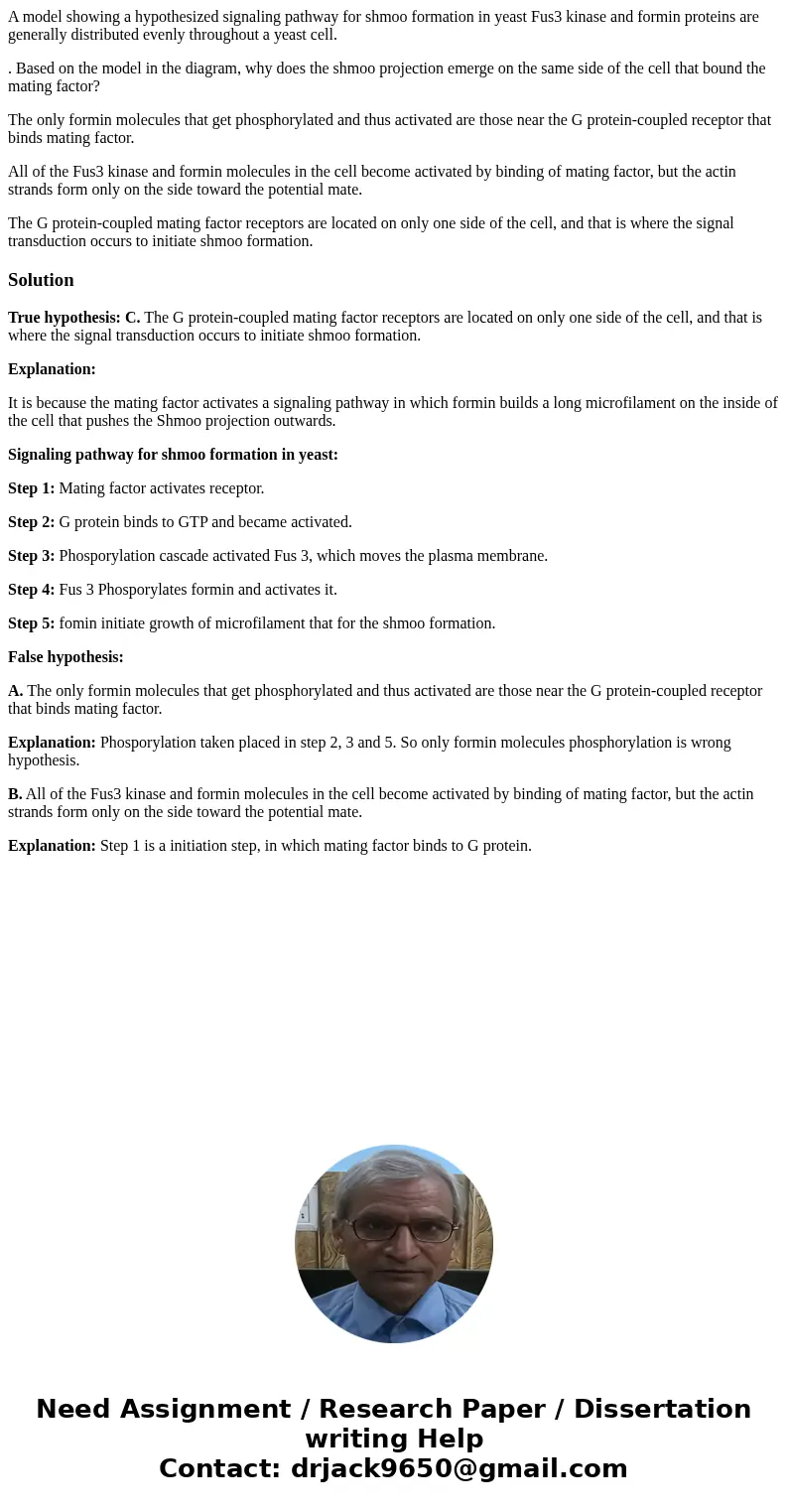A model showing a hypothesized signaling pathway for shmoo f
A model showing a hypothesized signaling pathway for shmoo formation in yeast Fus3 kinase and formin proteins are generally distributed evenly throughout a yeast cell.
. Based on the model in the diagram, why does the shmoo projection emerge on the same side of the cell that bound the mating factor?
The only formin molecules that get phosphorylated and thus activated are those near the G protein-coupled receptor that binds mating factor.
All of the Fus3 kinase and formin molecules in the cell become activated by binding of mating factor, but the actin strands form only on the side toward the potential mate.
The G protein-coupled mating factor receptors are located on only one side of the cell, and that is where the signal transduction occurs to initiate shmoo formation.
Solution
True hypothesis: C. The G protein-coupled mating factor receptors are located on only one side of the cell, and that is where the signal transduction occurs to initiate shmoo formation.
Explanation:
It is because the mating factor activates a signaling pathway in which formin builds a long microfilament on the inside of the cell that pushes the Shmoo projection outwards.
Signaling pathway for shmoo formation in yeast:
Step 1: Mating factor activates receptor.
Step 2: G protein binds to GTP and became activated.
Step 3: Phosporylation cascade activated Fus 3, which moves the plasma membrane.
Step 4: Fus 3 Phosporylates formin and activates it.
Step 5: fomin initiate growth of microfilament that for the shmoo formation.
False hypothesis:
A. The only formin molecules that get phosphorylated and thus activated are those near the G protein-coupled receptor that binds mating factor.
Explanation: Phosporylation taken placed in step 2, 3 and 5. So only formin molecules phosphorylation is wrong hypothesis.
B. All of the Fus3 kinase and formin molecules in the cell become activated by binding of mating factor, but the actin strands form only on the side toward the potential mate.
Explanation: Step 1 is a initiation step, in which mating factor binds to G protein.

 Homework Sourse
Homework Sourse